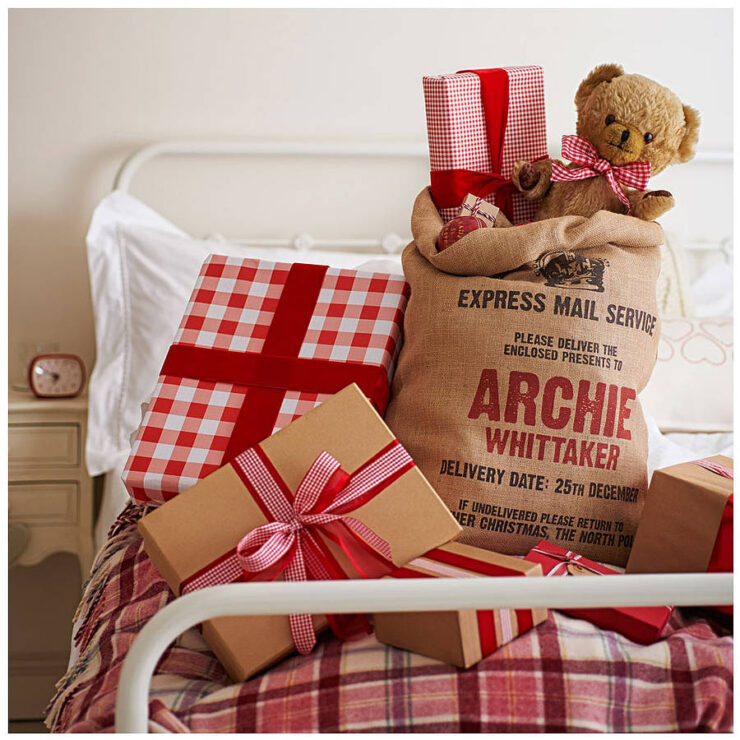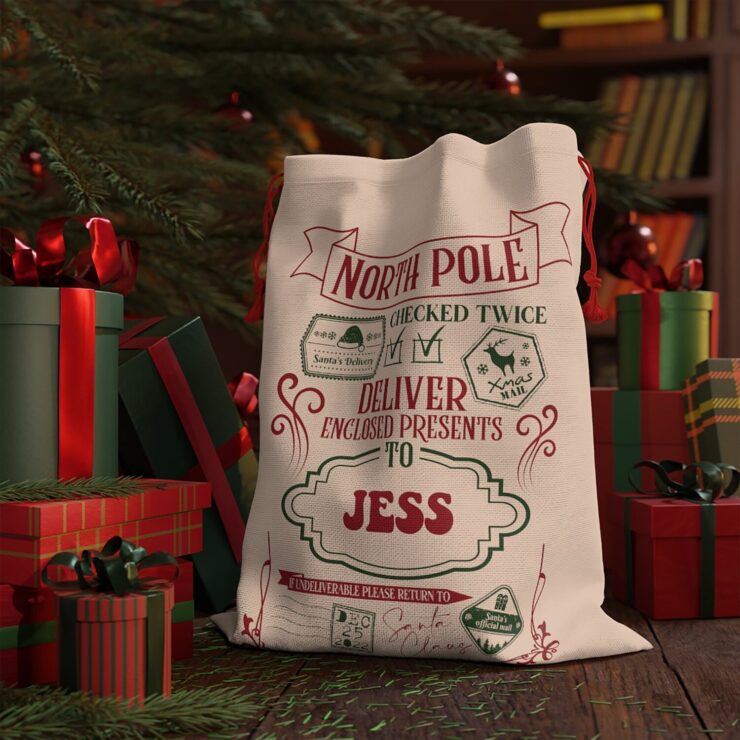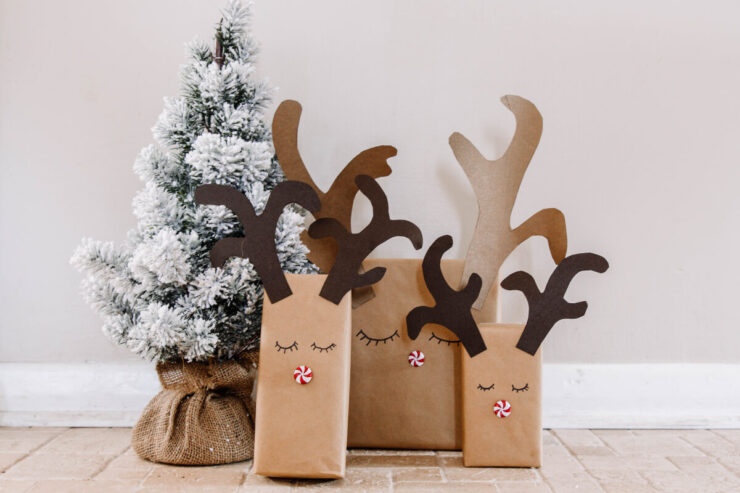Merry-making during the Christmas season is a cherished tradition for many, yet few are aware of the enormous waste problem tied to this festive period. It’s estimated that in the U.S. alone, household garbage increases by an astounding 25% between Thanksgiving and New Year’s Day. This uptick results in an additional million tons of waste each week, a statistic that often goes unnoticed amidst the holiday cheer.
This includes everything from discarded wrapping paper and leftover food to unwanted gifts and decorations, each contributing to a colossal heap of trash that eventually ends up in landfills. The call for sustainable Christmas practices is louder and more urgent than ever. Among sustainable solutions, an innovative and increasingly popular concept stands out – Santa sacks.
Understanding Santa Sacks

Traditionally, The Festive Santa sacks served as charming receptacles wherein children would find their gifts on Christmas morning. The sack is symbolic of the one carried by Santa Claus, filled with presents for the well-behaved. However, today, the Santa bag has morphed into an eco-friendly instrument for combating holiday waste. These bags, unlike disposable wrapping paper, can be used, reused, and even passed down as cherished family heirlooms, making them a smart choice for eco-conscious holiday shoppers.
The concept behind Santa sacks is uncomplicated, yet profoundly impactful. Rather than wrapping each present individually, gifts are placed in these sturdy, reusable sacks. This not only reduces the need for single-use wrapping paper, ribbons, and bows but also introduces an element of fun and suspense for the recipient. They have to rummage through it to discover their treasures, adding an element of surprise to the gift-giving process.
Benefits of Using Them
Santa sacks have far-reaching benefits that extend beyond the immediate reduction in wrapping paper waste. For one, they have an incredible ability to simplify the gift-wrapping process, eliminating the stress and time associated with wrapping each gift meticulously. In addition, Santa sacks are more resilient and robust than conventional gift wraps, ensuring that gifts remain intact and undamaged during transportation and under the Christmas tree.
Beyond the practicality, using Christmas bags also has a profound influence on children, teaching them about sustainability at an early age. When children see their gifts in Santa sacks year after year, they learn about reusing items and reducing waste. They come to understand that being environmentally responsible does not mean compromising on festive joy or gift-giving traditions. Instead, it’s about finding innovative ways to continue these traditions while honoring our planet.
Choosing Sustainable Materials

When selecting a Santa sack, it’s crucial to consider the type of material used. Traditional bags made of synthetic materials can take hundreds of years to decompose, defeating the purpose of the eco-friendly switch. Instead, look for Santa sacks made from natural, biodegradable materials like cotton, jute, or burlap. These materials not only have a smaller environmental footprint but also add a rustic, old-world charm to your holiday décor.
Even more beneficial are Santa sacks made from recycled or repurposed materials. They embody the very essence of sustainability, turning potential waste into a functional, attractive item. Some companies even offer bags made from recycled plastic bottles, offering a double benefit by preventing these bottles from polluting our land and seas.
Going DIY: Creative and Personalized Options
For the crafty and creative, making your own Santa sack is an excellent way to add a personal touch to this eco-friendly initiative. You can repurpose old pillowcases, tote bags, or fabric remnants, decorating them with eco-friendly paints, natural dyes, or embroidered names. The creative process can be a fun family activity, a way to bond while teaching children about sustainable practices.
However, it’s essential to steer clear of toxic adhesives or glitter that can harm the environment. Instead, use organic embellishments like dried flowers, leaves, or twine. The idea is to create a Santa sack that is not just reusable and personalized but also eco-friendly in every sense, right down to the decorations.
Where to Buy Eco-Friendly Options

If DIY isn’t your thing, fret not, there are plenty of places where you can buy environmentally friendly Santa sacks. Many online marketplaces like Etsy and Amazon have a variety of eco-friendly options made by talented artisans from around the world. Additionally, websites dedicated to sustainable living like EarthHero or Green Elephant also offer a selection of bags made from natural or recycled materials.
When purchasing, consider buying from small, local businesses that prioritize sustainability. This not only supports the local economy but also reduces carbon emissions associated with shipping products over long distances. Also, ensure that the company employs fair trade practices and is committed to social responsibility.
Santa Sacks as a Gift-Wrapping Alternative
As an alternative to conventional gift wrap, festive bags offer an attractive and fun solution. While it might take a bit of adjustment, especially for those accustomed to individual wrapping, the transition is straightforward. Start by explaining the concept to family members and then gradually integrate these bags into your holiday traditions. You could use one large sack per person, or use multiple smaller sacks for individual gifts.
The element of surprise is not lost either; in fact, it might be enhanced. Recipients would not be able to guess what’s in their sack just by looking at its shape, as they might with wrapped gifts. This new tradition could make unwrapping gifts more exciting and suspenseful, adding a layer of anticipation and delight to the holiday season.
Reducing Waste: Tips and Tricks

To fully leverage the waste-reducing potential of Santa sacks, consider combining them with other eco-friendly practices. Instead of using plastic bags, opt for recycled paper or even better, use a fabric marker to write names directly onto the sack. If you still wish to wrap some gifts individually, use reusable materials like scarves or dish towels, a technique known as furoshiki.
Encourage your friends and extended family to adopt bags too. Gifting them their first sack, complete with a note explaining its significance, could be a lovely way to spread the sustainability message. After all, true change happens when we inspire others to join us on the journey toward a cleaner, greener future.
Summation
An eco-friendly Christmas is possible with the right preparation, and reusable bags are perfect for reducing holiday waste. These sturdy bags can be reused year after year and will last much longer than single-use wrapping paper or plastic gift bags, thereby minimizing our impact on the environment. Plus, they look great in photos! With a few simple steps to transition your holiday decorating habit from disposable wrappings to sustainable Santa sacks, you can make sure that your family’s celebration of Christmas leaves a lasting impression – both in terms of memories and environmentally friendly practices.

